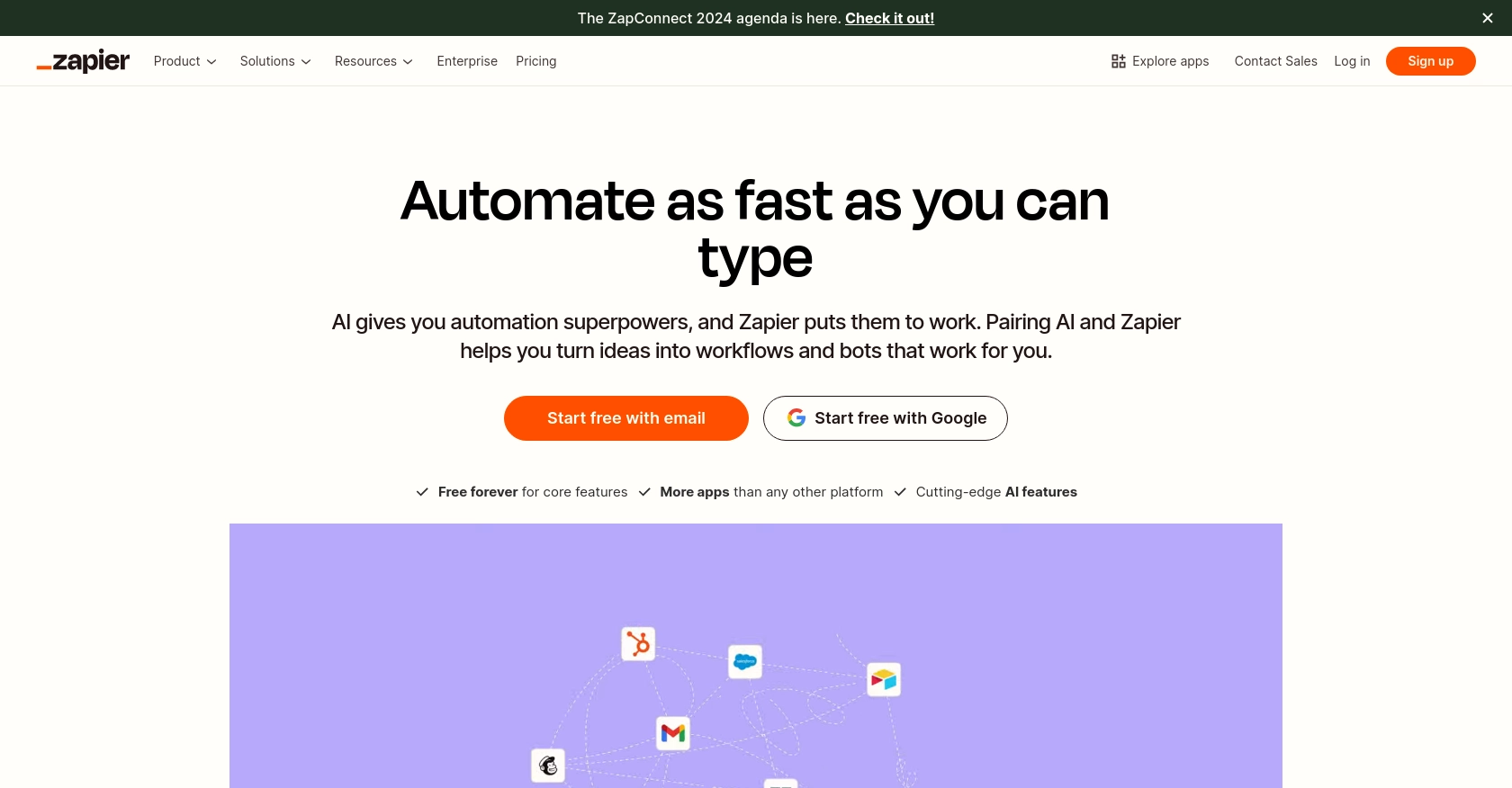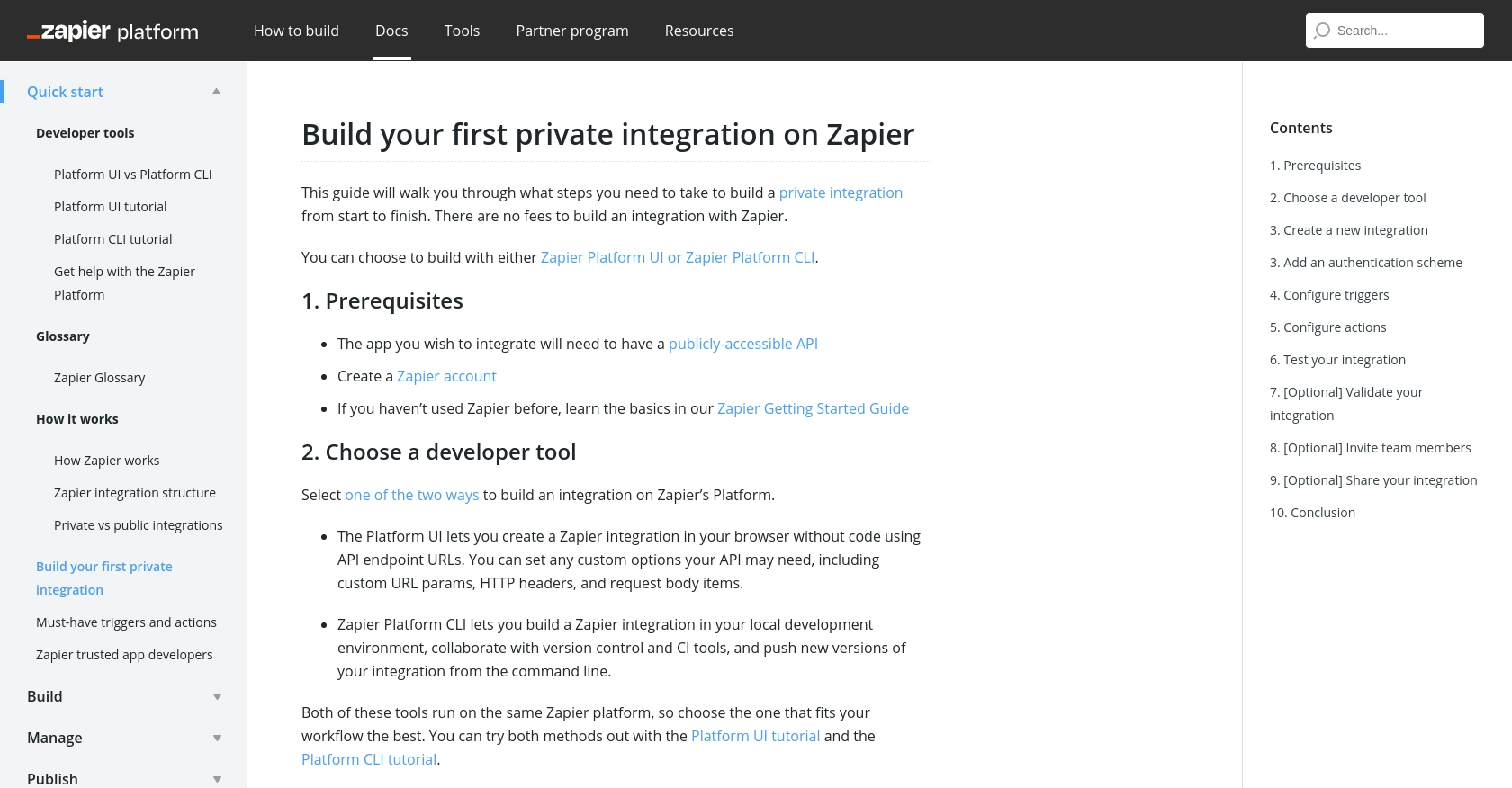Using the Zapier API to Push Data (with PHP examples)

Introduction to Zapier API Integration
Zapier is a powerful automation platform that connects various apps and services, enabling seamless data transfer and workflow automation without the need for coding. It supports thousands of applications, making it an essential tool for businesses looking to streamline operations and improve efficiency.
Developers may want to integrate with the Zapier API to automate data workflows between different applications. For example, you could use the Zapier API to push data from a custom CRM into a Google Sheets document, ensuring that your sales team always has the latest information at their fingertips.
Setting Up a Zapier Test or Sandbox Account for API Integration
Before you can start pushing data using the Zapier API, you need to set up a test or sandbox account. This will allow you to safely experiment with API calls without affecting your live data. Zapier offers a flexible environment for developers to build and test integrations.
Creating a Zapier Account
If you don't already have a Zapier account, you can sign up for a free account on the Zapier website. This account will give you access to the Zapier platform where you can create Zaps and test your integrations.
- Visit the Zapier sign-up page.
- Fill in the required information, such as your email and password.
- Follow the on-screen instructions to complete the registration process.
Setting Up a Zapier Sandbox Environment
Zapier provides a sandbox environment for developers to test their integrations. This is particularly useful for testing API calls and ensuring that your integration works as expected before going live.
- Log in to your Zapier account.
- Navigate to the Zapier Platform section.
- Select Create a new integration to start building your test integration.
Configuring Zapier API Authentication
Authentication is a crucial step in setting up your Zapier integration. Zapier supports various authentication methods, including API Key, OAuth v2, and Session Auth. For this tutorial, we'll focus on setting up authentication using the Zapier platform.
- Go to the Authentication section in your integration settings.
- Select the appropriate authentication scheme for your API. Zapier supports API Key, OAuth v2, and more.
- Follow the instructions to configure the authentication fields, such as client ID, client secret, or API key.
For more detailed guidance on authentication, refer to the Zapier Authentication Documentation.
Testing Your Zapier Integration
Once your sandbox account and authentication are set up, you can begin testing your integration. Zapier provides tools to test API requests and monitor the integration's performance.
- Create a test Zap using your integration's triggers or actions.
- Use the Test feature in the Zap editor to ensure that your API calls are working correctly.
- Check the Zap History to review the results of your test runs.
Testing is an essential step to ensure that your integration functions as expected and handles data correctly.

sbb-itb-96038d7
Making API Calls with Zapier Using PHP
To interact with the Zapier API using PHP, you'll need to ensure your development environment is properly set up. This section will guide you through the necessary steps to make API calls, including setting up PHP, installing dependencies, and writing the code to push data to Zapier.
Setting Up Your PHP Environment
Before making API calls, ensure you have the following prerequisites:
- PHP 7.4 or higher installed on your machine.
- Composer, the PHP package manager, for handling dependencies.
To verify your PHP installation, run the following command in your terminal:
php -vTo install Composer, follow the instructions on the Composer download page.
Installing Required PHP Libraries
For making HTTP requests to the Zapier API, you'll need the Guzzle HTTP client. Install it using Composer:
composer require guzzlehttp/guzzleWriting PHP Code to Push Data to Zapier
With your environment set up, you can now write the PHP code to push data to Zapier. Below is a sample script that demonstrates how to make a POST request to the Zapier API:
require 'vendor/autoload.php';
use GuzzleHttp\Client;
$client = new Client();
$endpoint = 'https://hooks.zapier.com/hooks/catch/123456/abcdef';
$data = [
'name' => 'John Doe',
'email' => 'john.doe@example.com',
'message' => 'Hello, Zapier!'
];
$response = $client->post($endpoint, [
'json' => $data
]);
if ($response->getStatusCode() == 200) {
echo "Data pushed successfully!";
} else {
echo "Failed to push data.";
}
In this code, replace https://hooks.zapier.com/hooks/catch/123456/abcdef with your actual Zapier webhook URL. The $data array contains the information you want to send to Zapier.
Verifying API Call Success
After running your PHP script, check the response status code to verify success. A status code of 200 indicates that the data was successfully pushed to Zapier. You can also log in to your Zapier account and check the Zap history to confirm the data was received.
Handling Errors and Common Error Codes
When making API calls, it's important to handle potential errors. Common HTTP error codes include:
- 400 Bad Request: The request was malformed. Check your data structure.
- 401 Unauthorized: Authentication failed. Verify your credentials.
- 404 Not Found: The endpoint URL is incorrect. Double-check the URL.
- 500 Internal Server Error: An error occurred on the server. Try again later.
For more detailed error handling, refer to the Zapier Authentication Documentation.
Conclusion and Best Practices for Zapier API Integration with PHP
Integrating with the Zapier API using PHP can significantly enhance your application's automation capabilities, allowing seamless data transfer between various services. By following the steps outlined in this guide, you can efficiently set up your environment, authenticate your integration, and make successful API calls.
Best Practices for Secure and Efficient Zapier API Integration
- Securely Store Credentials: Always store your API credentials securely, using environment variables or secure vaults, to prevent unauthorized access.
- Handle Rate Limiting: Be aware of Zapier's rate limits to avoid throttling. Implement exponential backoff strategies for retrying requests.
- Standardize Data Formats: Ensure that the data you send to Zapier is standardized and consistent to prevent errors and improve data integrity.
- Monitor and Log API Calls: Regularly monitor your API calls and maintain logs to quickly identify and resolve any issues that arise.
Enhance Your Integration Strategy with Endgrate
While building integrations can be rewarding, it can also be time-consuming and complex. Endgrate offers a streamlined solution by providing a unified API endpoint that connects to multiple platforms, including Zapier. This allows you to focus on your core product while outsourcing the complexities of integration development.
With Endgrate, you can build once for each use case and leverage an intuitive integration experience for your customers. Visit Endgrate to learn more about how you can save time and resources by simplifying your integration processes.
Read More
- https://endgrate.com/provider/zapier
- https://platform.zapier.com/quickstart/build-private-integration
- https://platform.zapier.com/build/auth
- https://platform.zapier.com/manage/sharing
- https://platform.zapier.com/build/trigger
- https://platform.zapier.com/build/action
- https://platform.zapier.com/build/test-auth
- https://platform.zapier.com/publish/integration-checks-reference
Ready to get started?
